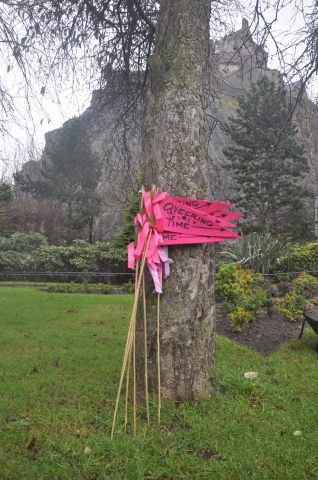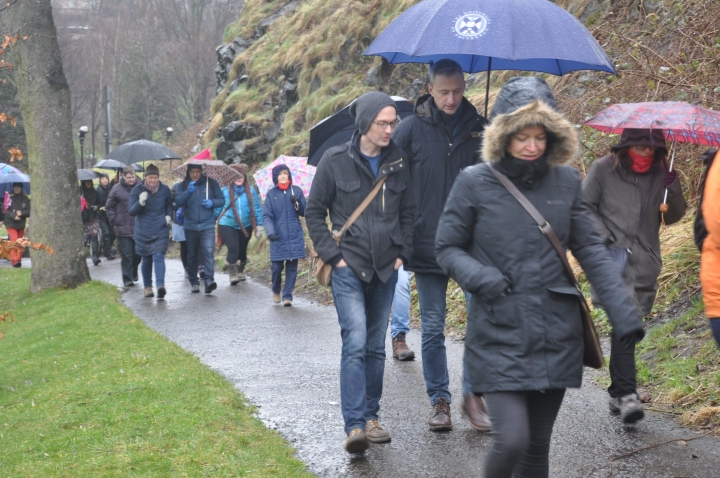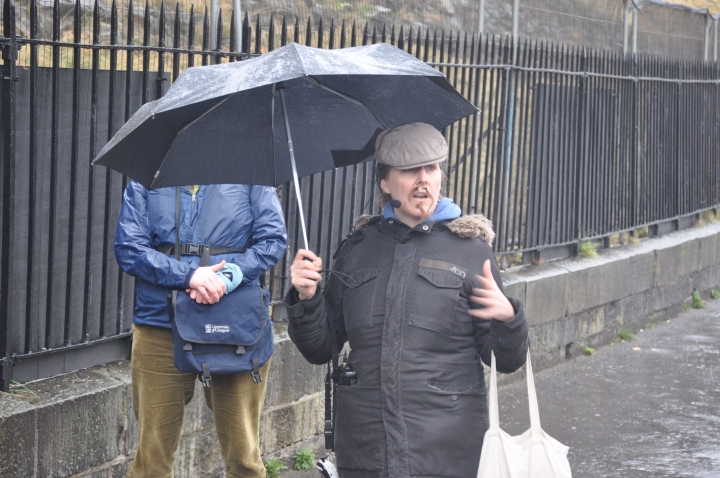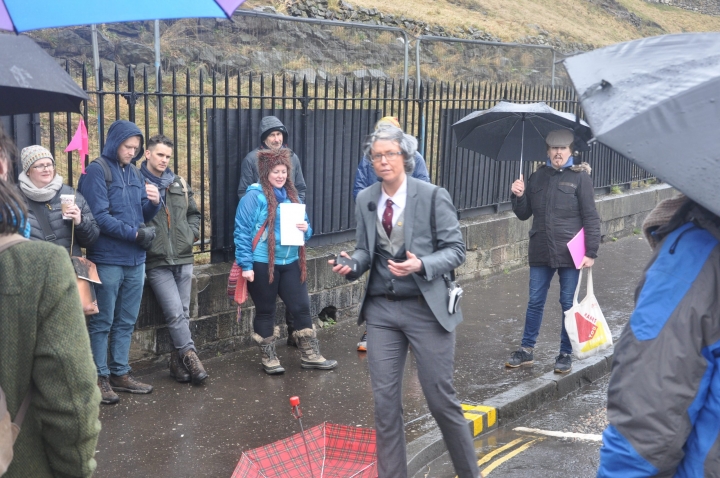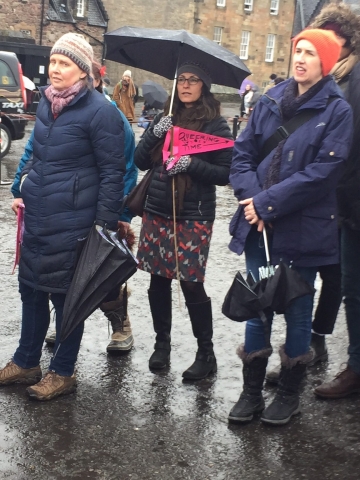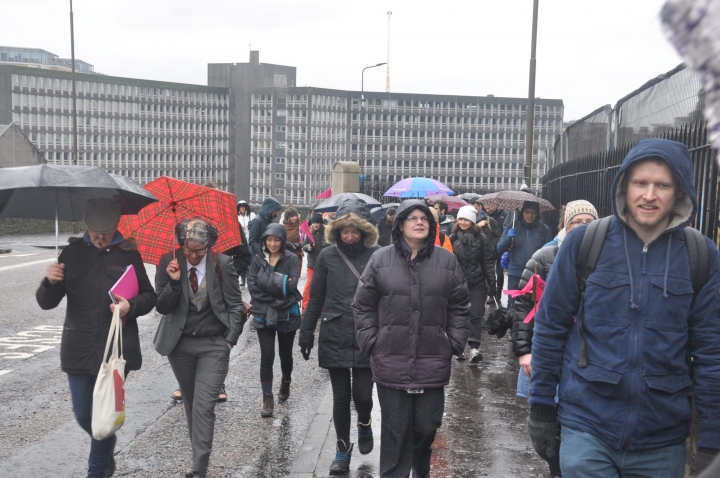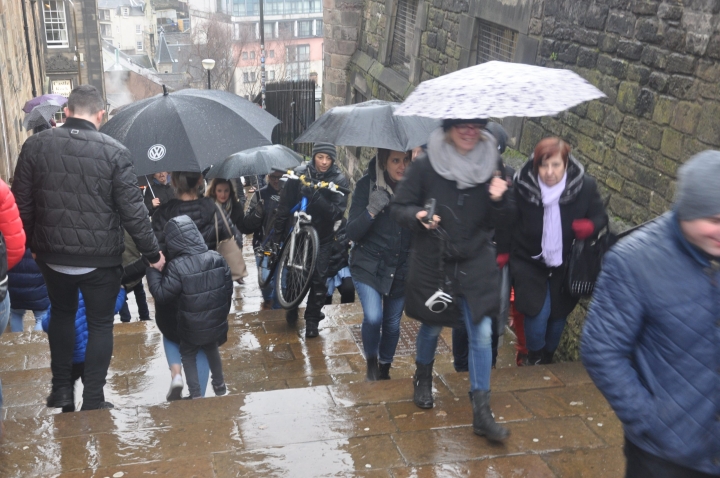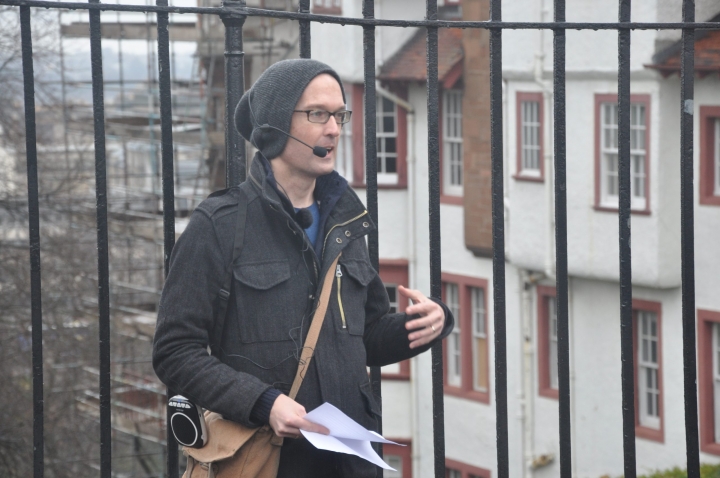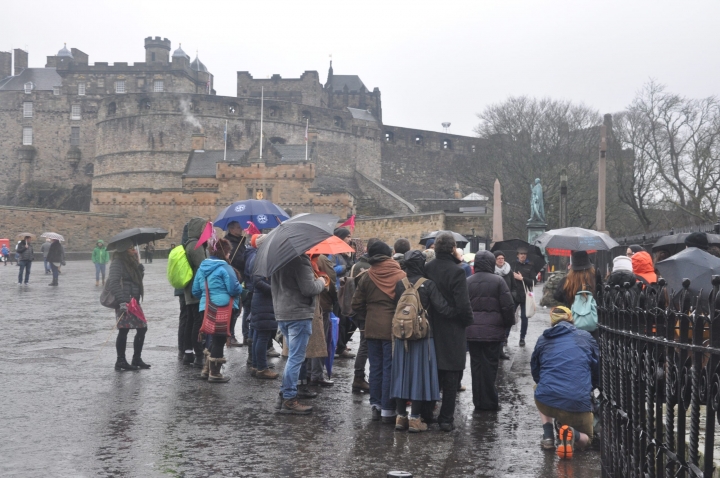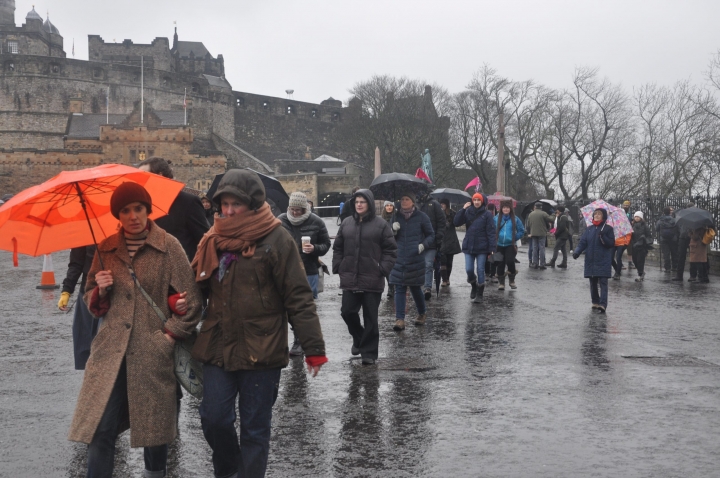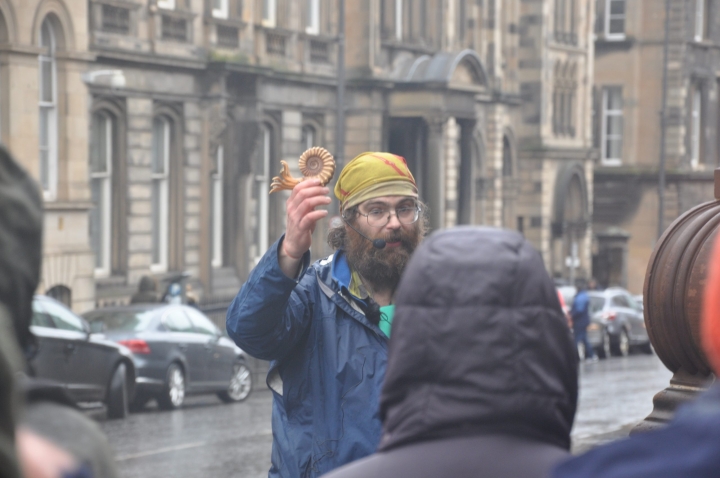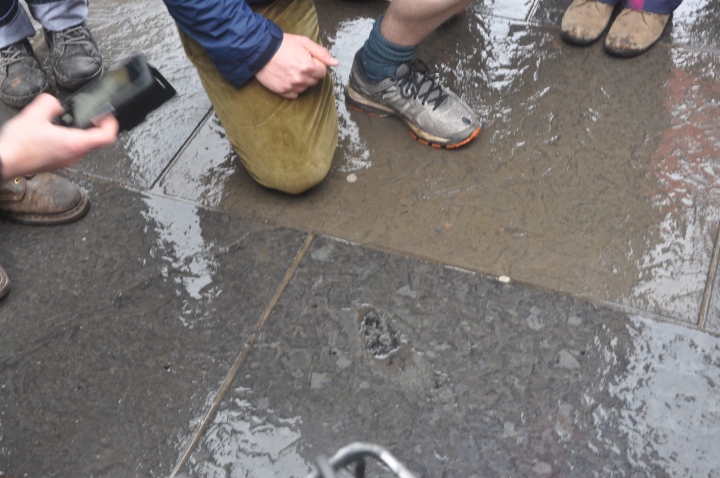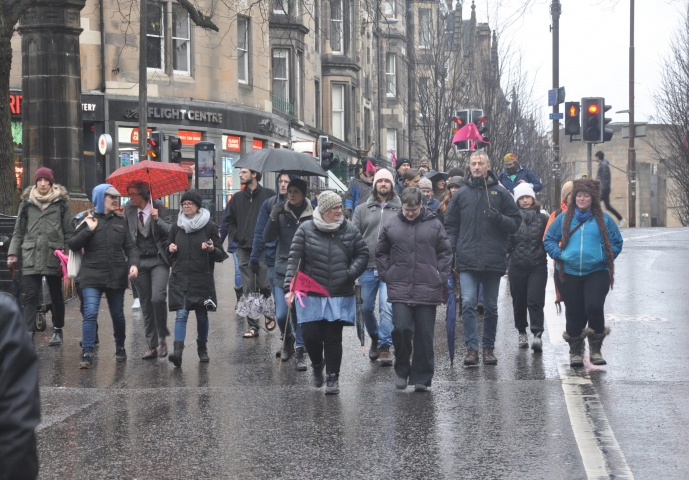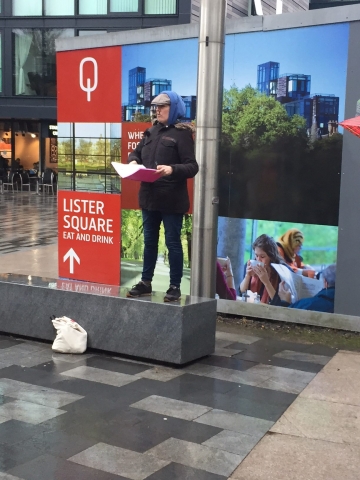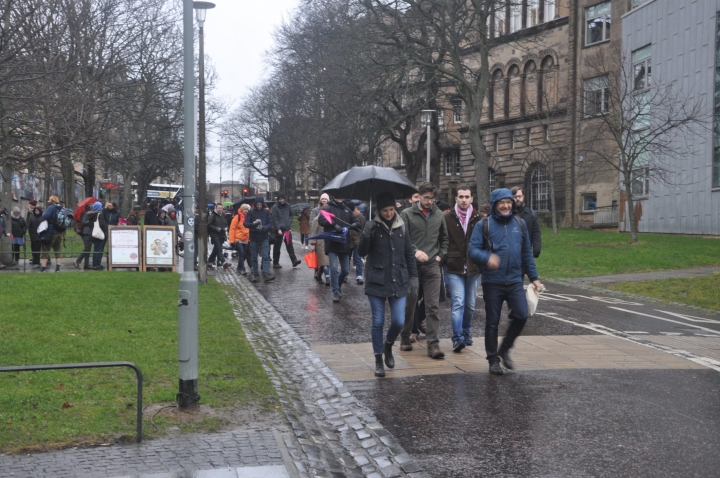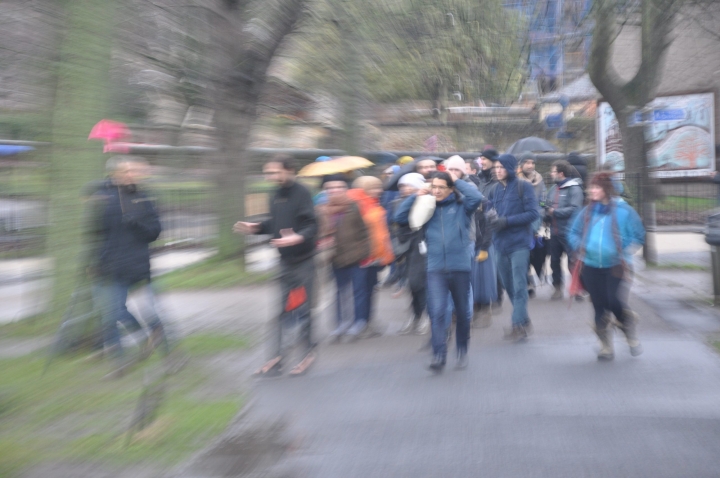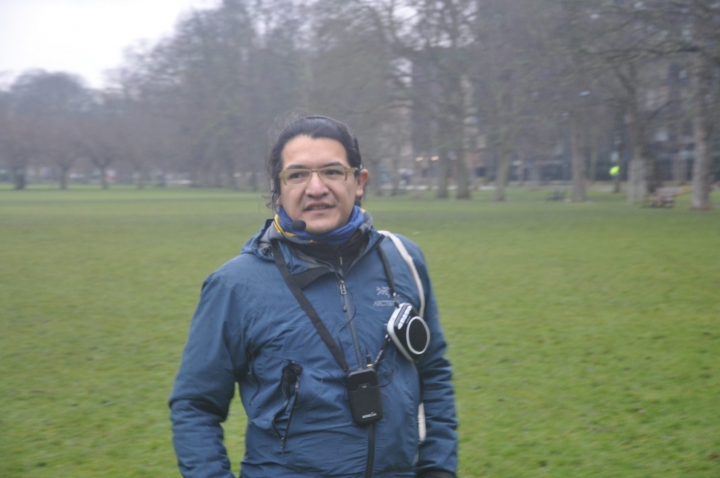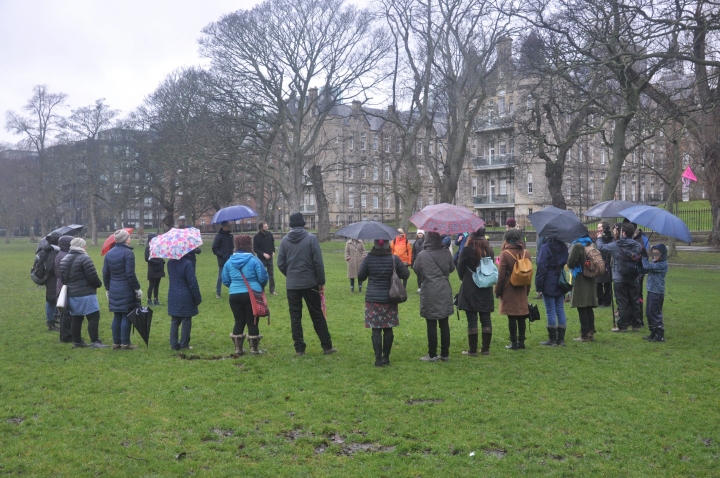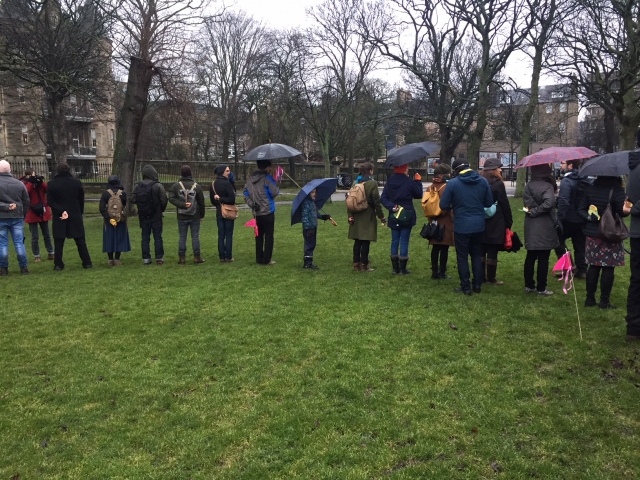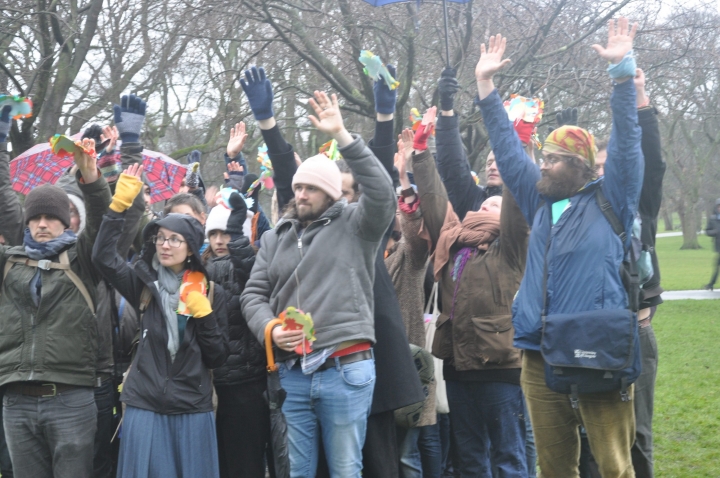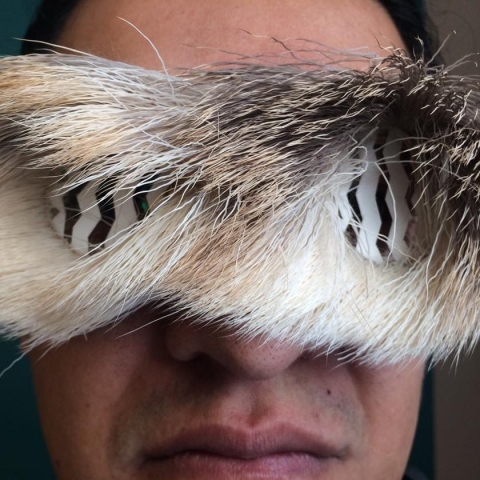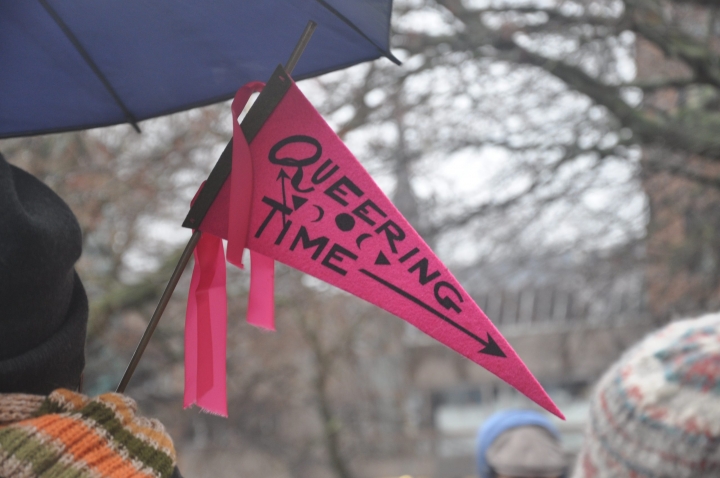The concept of ‘Deep time’ was developed by Scottish geologist James Hutton (1726-1797), and coined as a term by the American author John McPhee. Hutton posited that geological features were shaped by sedimentation and erosion, a process that required timescales much grander that the arc of human history. Deep time displaces the human from conceptualizations of time, while the current crisis of the Anthropocene alarmingly re-centres it. Time, understood in the Anthropocene is utilitarian, regulatory, and measured. This time is chronological and grounded in a neoliberal progress narrative that reproduces itself. Here, progressive time is equated with humanist notions of freedom, rationality, peace, equality, and prosperity. This progressive time, however, is afforded to particular conceptualizations of humanity, where certain bodies and subjects are always rendered out of time.
WalkingLab’s event: Stone Walks Edinburgh: Queering Deep Time unsettled such understandings of time, investigating other ways of ‘thinking-with’ time, that entangles geos, bios, and Land. Queering Deep Time, performed a ‘walking tour’ through the city of Edinburgh, rupturing linear time through ‘pop up lectures,’ performances, and artistic interventions. The walk considered time as out of joint, relational, and material.
40 people joined the two hour tour on wet and cold February 3rd, 2018. WalkingLab commenced the tour with a short lecture on queering time, offering conceptualizations of time that are out of joint, indeterminate, and strange. After walking up the volcanic rocky hill towards the castle, Toby Sharp and Baron Farquarson led us through an ‘Innov-reiki’ session, where participants learned strategies for re-directing their energies into more ‘resilient, creative, and market-friendly’ practices. Capitalizing on accelerated time and market-driven urban planning, Toby and Baron’s three pop-up performances humorously interrogated the ways that creativity and the arts are harnessed for re-development.
After another short walk David Farrier, read a short excerpt from his forthcoming book Footprints: In Search of Future Fossils, and discussed the deep earth nuclear storage facilities designed to remain secure for the next 100,000 years.
Further along our walking tour, outside of the National Museum of Scotland, Al McGowan, a pavement palenontologist, showed us fish fossils embedded in the sidewalk.
From there the walk towards the Meadows, where we heard from Toby and Baron about the Quartermile development project, a regeneration scheme in central Edinburgh.
Following this, Rodrigo Hernandez-Gomez invited participants to consider Indigenous time, circular, ancestral, and situated. In the Meadows, the group paused to form a circle, and participate in Rodrigo’s project Seed Year, which draws on Nahua Indigenous concepts of Land and temporality. Seed Year calls for remembering all of our histories by hinting at the existence of a particular ‘time regime’ beginning from the year 1492, that we shall count in Gregorian Calendar years. The project offers a representation for each year occurred to ask ourselves how we each account for the way we experienced this particular time lapse: What is happening inside those years that escape our memory or even in those years that we are familiar with?
The walking tour ended at the University of Edinburgh, school of art, where Toby and Baron reflected on contributions by artists and art students to neoliberal urban renewal and surveillance.
Stone Walks Edinburgh: Queering Deep Time was generously hosted by Jonathan Wyatt and the Centre for Creative-Relational Inquiry, University of Edinburgh.
“Queering Time” pennants by Mary Tremonte.
Photographs by David Ben Shannon.
